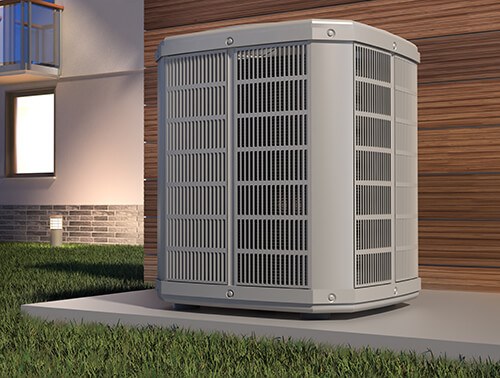
Heat pumps are becoming more popular nationwide, including in the Austin area. That’s primarily because they’ve proven to be effective and efficient. They can be more efficient than traditional heating units, and making them even more attractive is the fact that they can operate as air conditioners in the summer. The scientific principle behind a heat pump is that heat is a form of energy that can be transferred. In the summer, heat is transferred from inside a home to the exterior, and in the winter, the opposite happens. Many people have asked us the same question, “Where does the heat come from in the winter?”
Heat Is Present in the Winter
Even though it gets cold here in the winter, there is still heat present in the air. There might not be a lot of heat, but there is still some. If you’ve ever been in an environment in which the temperature was below freezing and then you get to experience temperatures that are about 10 degrees higher, you’ll appreciate the change. It’s clear from this scenario that there is some level of heat even when the temperatures aren’t what we would consider warm.
How Does That Heat Get Inside Your Home?
There are two types of heat pumps that are commonly used in our area. They differ in terms of where they get their heat from. Geothermal heat pumps, which are also known as ground-source heat pumps, get their heat from under the ground. The pipes that are part of the system might be five or six feet under the ground, or if necessary, they could be much further. The exact location and depth will depend on many factors that could be specific to certain properties. Under the ground, the temperature remains constant pretty much every day of the year. It’s generally around 50 to 60 degrees, which is why geothermal heat pumps are very efficient. They’ll always have a consistent source of heat.
The other type of heat pump doesn’t require any digging. It’s an air-source heat pump. The outdoor component has pipes running through it, and it’s usually placed right outside the home. It can look very similar to an air conditioning unit. Even though the temperature of the outdoor air in the winter can be less than 50 to 60 degrees, there’s still enough heat present for the heat pump to work. In northern climates that experience freezing weather, there are many people who use heat pumps, so we can certainly use them in Texas with confidence.
A heat pump relies on a refrigerant that runs through its pipes. It can either flow through the pipes as a liquid or a gas, and its state of matter will depend on pressure and temperature. The inner workings of the system are complex, but the basic idea is that refrigerant can either absorb heat or give off heat. In the winter, the refrigerant travels outside within the closed-loop system of pipes. At this point, it’s a liquid. It absorbs heat from either the outside air or the ground, and it transitions into a gas. It flows back into the home, where a special component helps it release that heat and transition back into a liquid. The heat pump can then circulate heat around your home. A heat pump can be used in homes that have central air as well as in homes that don’t.
Heat Pumps Versus Furnaces
Furnaces have been used for a long time, and they can certainly get the job done and keep you warm and cozy in the winter. The biggest distinction between a furnace and a heat pump is that the furnace must generate heat. Whether you have an electric furnace or one that runs on natural gas or propane, that furnace uses up a lot of resources when it generates heat. Heat pumps are preferred by more and more people because they don’t have to make their own heat; they just transfer heat from somewhere else. The difference in energy consumption could really add up over time.
At Totally Cool Heating & Air, located in Austin, TX, we offer installation, maintenance, and repair services related to heat pumps. In addition, we can help residents with their heaters or air conditioners, and we have experience with attic insulation, solar window screens, duct sealing, and duct replacement. Call us to schedule an appointment.v
